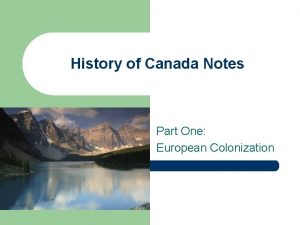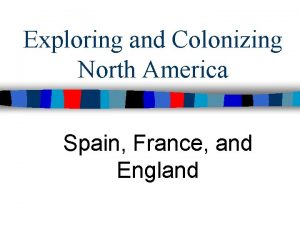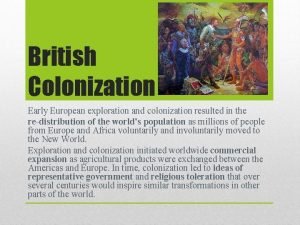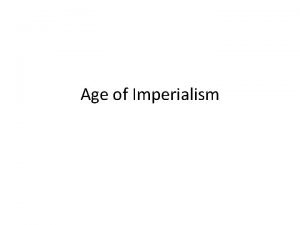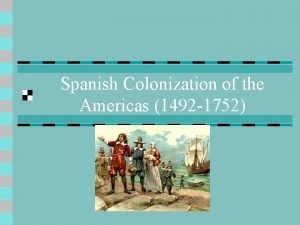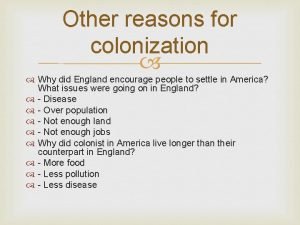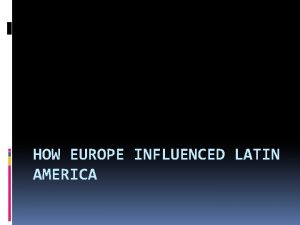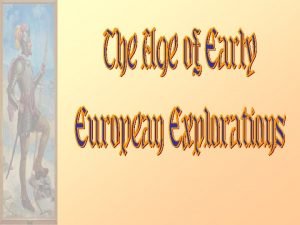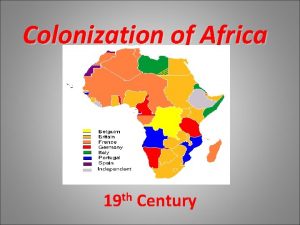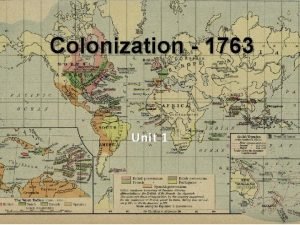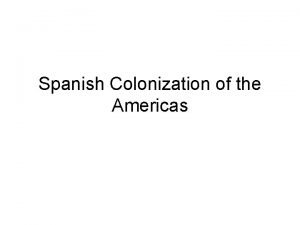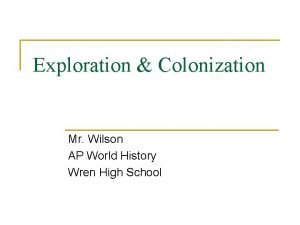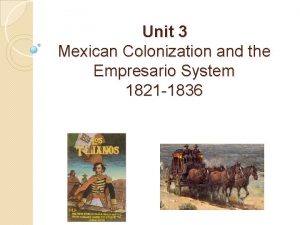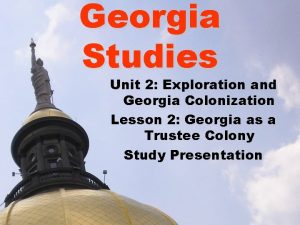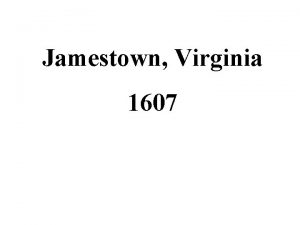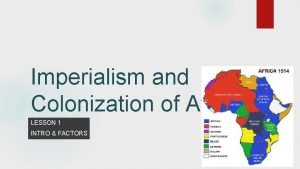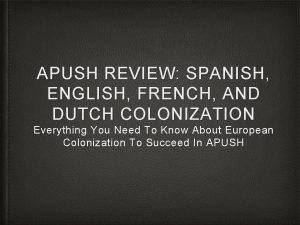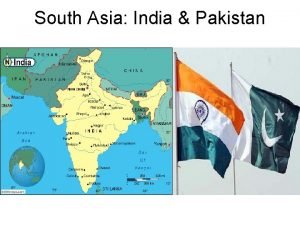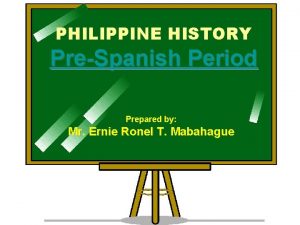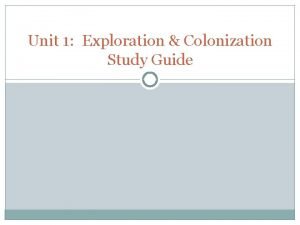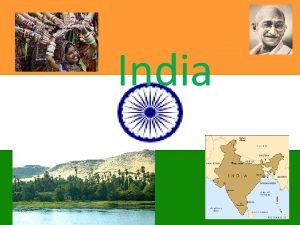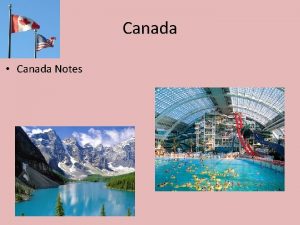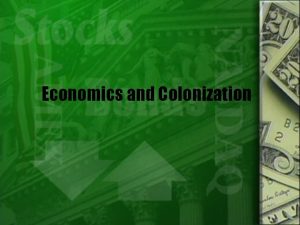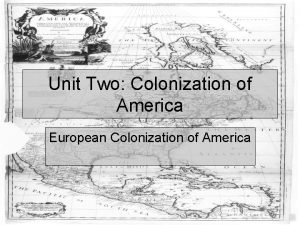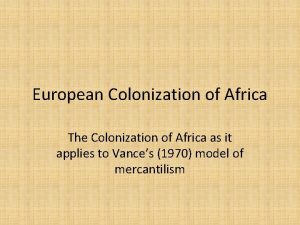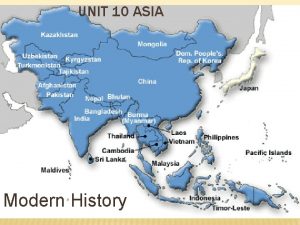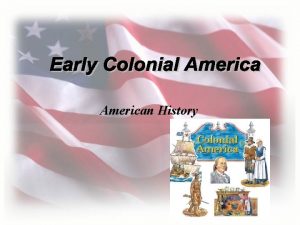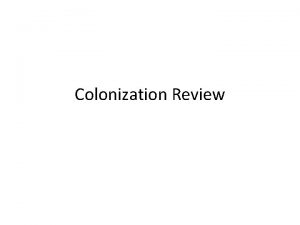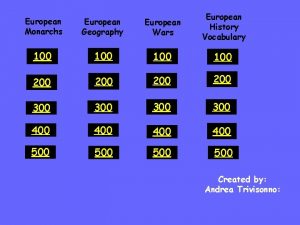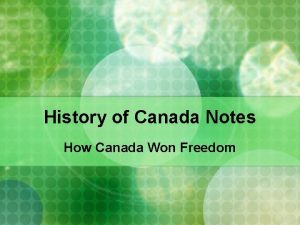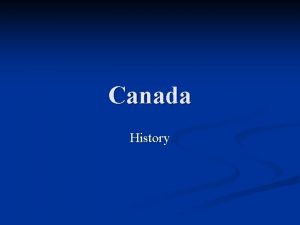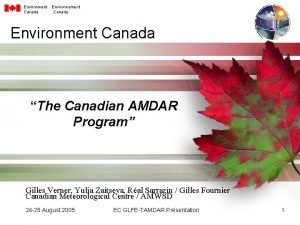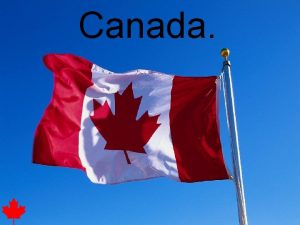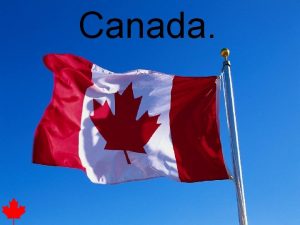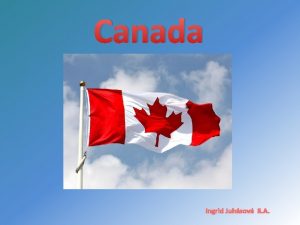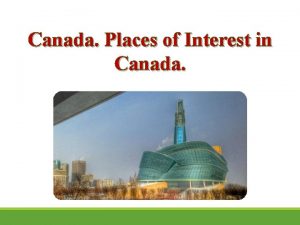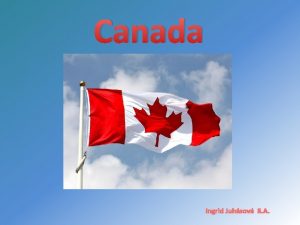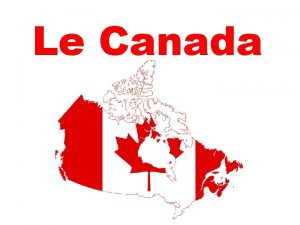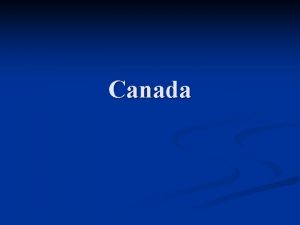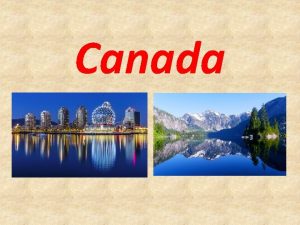History of Canada Notes Part One European Colonization

























- Slides: 25

History of Canada Notes Part One: European Colonization

The First Nations l l Native peoples of Canada Came from Asia 12, 000 years ago – l Crossed Bering Land Bridge that joined Russia to Alaska 12 tribes made up the First Nations

Inuit l l l One of the First Nation tribes Still live in Canada today Canada’s government gave the Inuit the Nunavut Territory in northeast Canada.

The Europeans in Canada… l l First explorers to settle Canada were Norse invaders from the Scandinavian Peninsula In 1000 CE, they built a town on the northeast coast of Canada & established a trading relationship with the Inuit – l The Norse deserted the settlement for unknown reasons Europeans did not return to Canada until almost 500 years later…


England Claims Newfoundland l l 1497: Italian explorer John Cabot, sailed to Canada’s east coast Cabot claimed an area of land for England (his sponsor) & named it Newfoundland

John Cabot

New France l l 1534: Jacques Cartier sailed up the St. Lawrence River. Claimed the land for France. – French colonists named the area New France

New France (Quebec) l l l 1608: Samuel de Champlain built the first permanent French settlement in Quebec Population grew slowly Many people moved inland to trap animals— hats made of beaver fur were in high demand in Europe

Samuel de Champlain

New France (Quebec) l l European fur traders were joined by French farmers, merchants, and missionaries from the Catholic Church Brought with them French laws, traditions, & religion – France wouldn’t let anyone move to New France who was not Catholic


The British in Canada… l British colonized region south of New France – Saw New France’s success in fur trapping & wanted to take control of the fur trade

French and Indian War (1754) l l 1754: Led to the French and Indian War where Great Britain fought for control of Canadian territory & the fur trade and conquered Quebec. Great Britain and Iroquois Indians versus France and Huron Indians.

Treaty of Paris (1763) l l Gave British control of all lands east of the Mississippi River, British forced Nova Scotia’s French-speaking people to leave – Nova Scotia’s French went to another French colony, Louisiana


Quebec Act--1774 l l British allowed French to stay in Quebec, but continued to control the region Quebec Act guaranteed the French the right to maintain their culture (language, religion, traditions)

Division of Canada l l Most English speaking citizens lived in Upper Canada (Ontario) Most French speaking citizens lived in Lower Canada (Quebec)

War of 1812 French and British worked together against the US who tried to invade Canada n War resulted in a draw, but it defined the USCanadian border & increased a sense of Canadian nationalism n

Province of Canada n Canadians began to rebel against British control n Britain sent a government reformer to examine the Canadian problem Result of the inquiry, Britain discovered an economic need to unify the 2 Canadian provinces n 1841—Upper & Lower Canada were united, establishing the Province of Canada n

British North America Act (1867) n 1867: British North America Act: created a federation union of Canada Joined four colonies (Quebec, Ontario, New Brunswick, & Nova Scotia) n 4 colonies became Provinces joined by a common written law (constitution). - Britain accepted the agreement because they were glad to be rid of the responsibility of protecting the colonies (expensive) n


Results of the British North America Act n Allowed each region to sell goods more easily to one another Improved trade helped the economy n Soon there was enough money to build a railroad across the country n n 1886: Transcontinental Railroad was built & people could now easily travel from the Atlantic Ocean to Pacific Ocean


Expanding Canada When Canada became a confederation in 1867, there were only 4 provinces n Leaders desired to expand the new country from the Atlantic to the Pacific n Bought land from the Hudson’s Bay Company n Thought the purchase would be a simple process, but problems occurred with the native peoples n
 When did canada get colonized
When did canada get colonized The colonial class system
The colonial class system Early european exploration and colonization resulted in
Early european exploration and colonization resulted in Between 1859 and 1893 vietnam
Between 1859 and 1893 vietnam Art in emerging europe summary
Art in emerging europe summary Spanish colonization of the americas
Spanish colonization of the americas Reason for colonization
Reason for colonization Colonization of south america
Colonization of south america What is the cycle of conquest
What is the cycle of conquest The partitioning of africa
The partitioning of africa Colonization
Colonization God gold glory
God gold glory Portugal colonization
Portugal colonization What was the empresario system
What was the empresario system Unit 2 exploration and georgia colonization
Unit 2 exploration and georgia colonization Colonization acrostic poem
Colonization acrostic poem Indigenous defenition
Indigenous defenition Defenition of bacteria
Defenition of bacteria Space colonization
Space colonization Jamestown reason for colonization
Jamestown reason for colonization Reasons for colonization in america
Reasons for colonization in america Colonization
Colonization French colonization apush
French colonization apush Asia colonization map
Asia colonization map Political system and governance before spanish colonization
Political system and governance before spanish colonization Unit 1 exploration and colonization
Unit 1 exploration and colonization
